Sadly, it seems at least sixty people perished due to the harsh winter storm over the holidays. Hopefully, you and yours made it through without much trouble like we did. I figured that now would be a good time to analyze our preparedness just in case something like this hits again over the next few months. So, here’s where we stood…
The weather got bitterly cold for a few days, down into the single digits here in Kansas City, and even into the negatives overnight. You know it’s cold when, as soon as you step outside, your nose hairs freeze, which isn’t something I missed about the Midwest when we lived in the Seattle area.
I was mostly ready, with good outdoor clothing, stocking caps, gloves, boots, and so on. But the one thing I didn’t plan on was the windchill being SO cold on my face that I purchased some quality ski masks. Regrettably, they didn’t show up until after the major cold had come and gone, but at least I have them for future trouble.
Naturally, the first concern besides me getting windburn was for my girls:
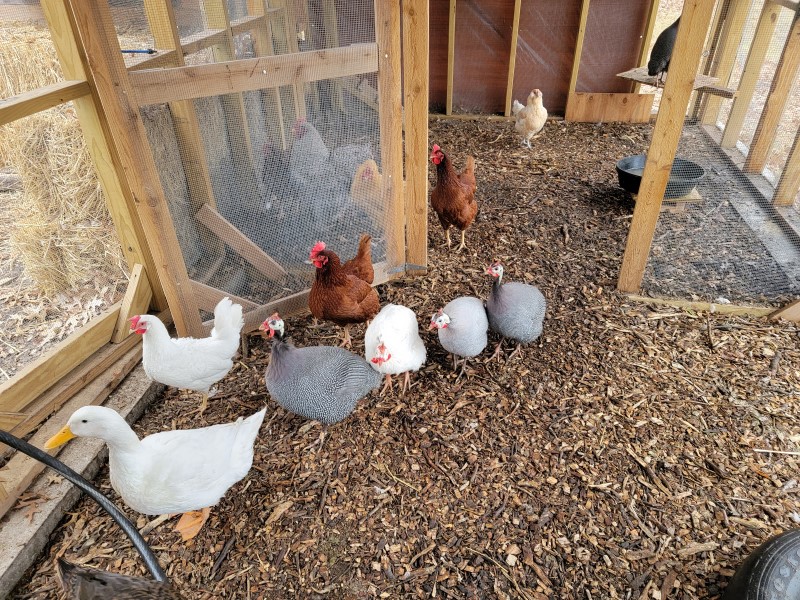
We’re new to keeping chickens (as well as ducks and guinea hens) as this is our first year, but they managed to survive. Aside from having a well-built coop designed by my father-in-law, we added straw bales to block the wind from the underside of their coop so that they’ll both come out during the day to eat and (I’m told) so that they’ll stay warmer at night:
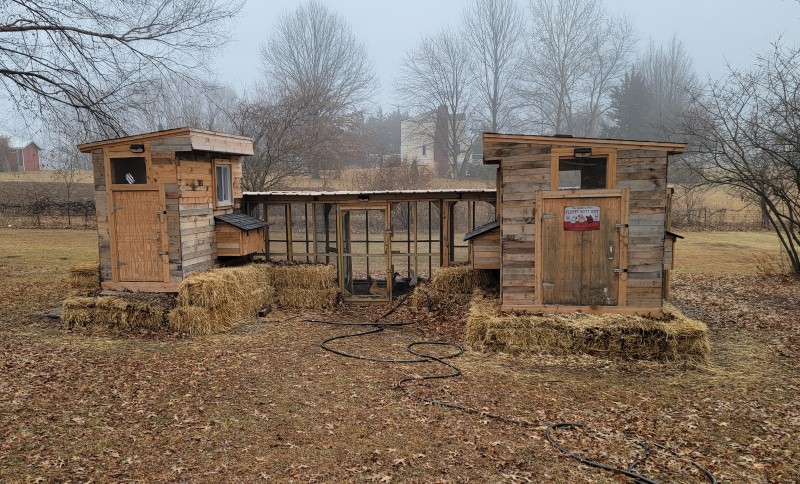
It got so cold–and I was so concerned about the windchill on my birds–that I’d added several tarps around their coop. Most have since been taken down in the photo above, but here’s one that I’ve kept up:
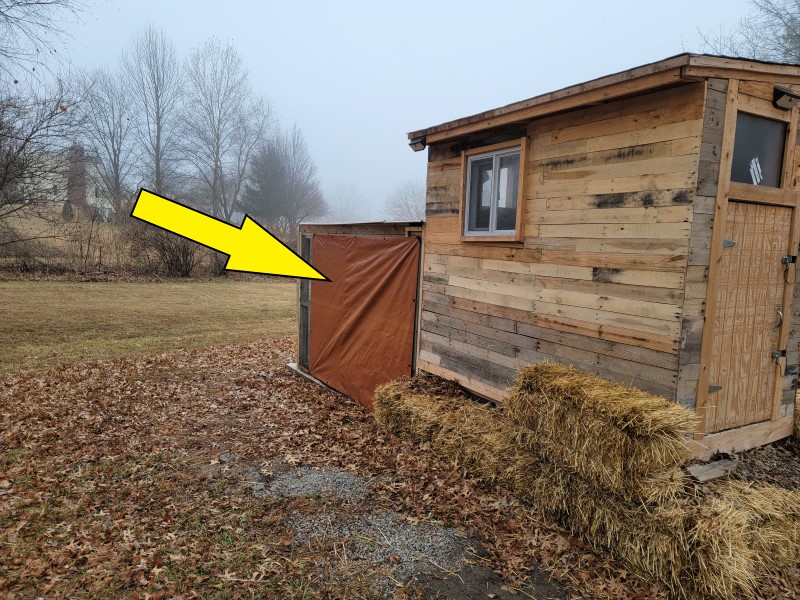
I also figured the birds would appreciate some insulation underneath the coop–especially on their feet–and, so, my son was kind enough to dismantle a straw bale and break it apart during one of the really cold days:
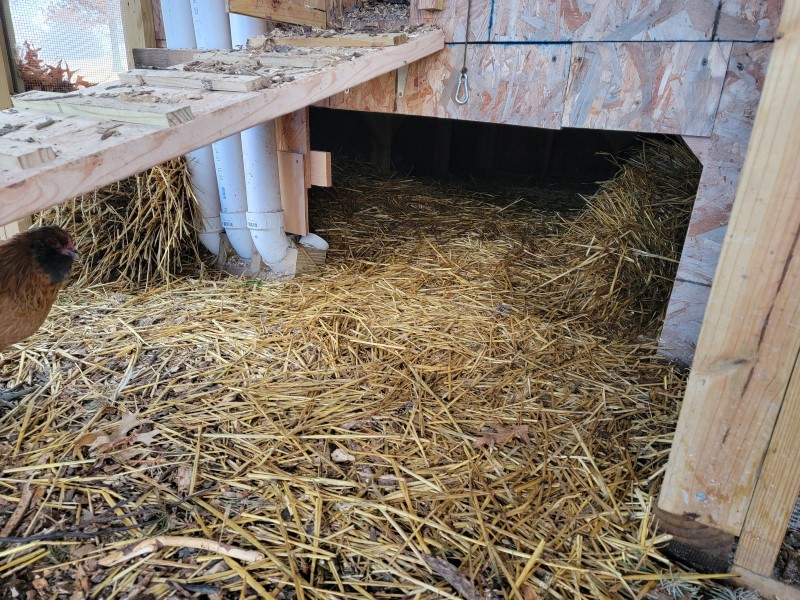
Ultimately, the birds did better than I’d expected. I’d debated about whether or not to add supplemental heat to the coop, but I wasn’t sure how and I absolutely didn’t want to burn the place down, so I just prayed for the best. Surprisingly, our guinea hens, who normally roost in their own coop, joined the chickens when it got really cold. That was something I’d never expected! But all the birds got along, and the extra bodies probably added a few degrees temperature, so I doubt the chicken minded.
I was quite concerned that we would have a loss of water, so besides allowing a sink to drip in our bathroom for a few days, I’d kept three buckets of water filled for our birds:

In fact, this is something I’ve been doing since it’s been cold because the water in the garden hose that runs down to the coop freezes rather easily. This way I can simply dump the old water (that the ducks tend to get messy anyway) and refill in the morning. When it was bitterly cold, I had to go down two or three times to ensure their water didn’t freeze, but the ducks were pretty good about keeping the water agitated enough so that didn’t happen often. Now that the more imminent danger has passed, I’m back to keeping a single bucket filled for the next day, which works well.
Aside from the birds, I was concerned about losing water for us, too. Normally, I would only fill a few pitchers and keep the Berkey filter full, but with other people in town and the media hyping this storm like they did, I filled several large Tupperware bowls that my mother-in-law and my mother have:
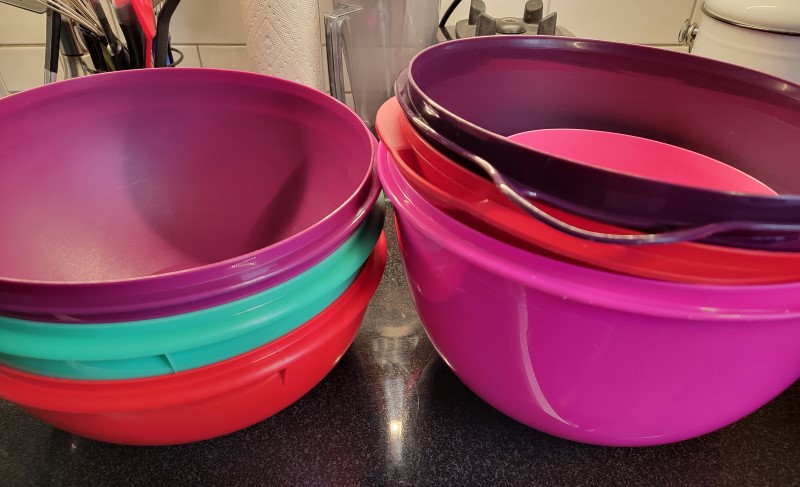
Although empty now, I’d say I had several gallons of water between them, which would’ve been used up quickly. Of course, I keep plenty of water in 55-gallon barrels, but I’m afraid they eventually froze, even in my garage, which I don’t believe I’ve ever had happen before:
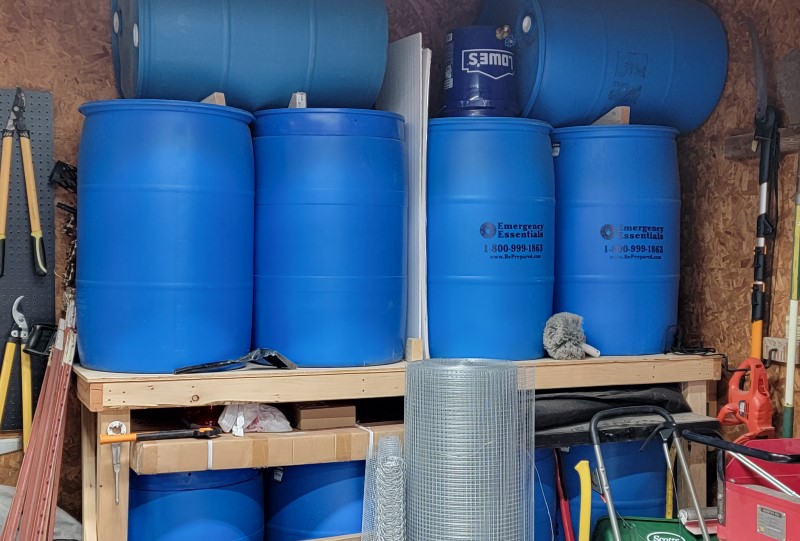
Even my IBC totes were close to freezing, though at over 2,000 pounds I couldn’t move them well enough to decide whether they’d actually frozen or not:
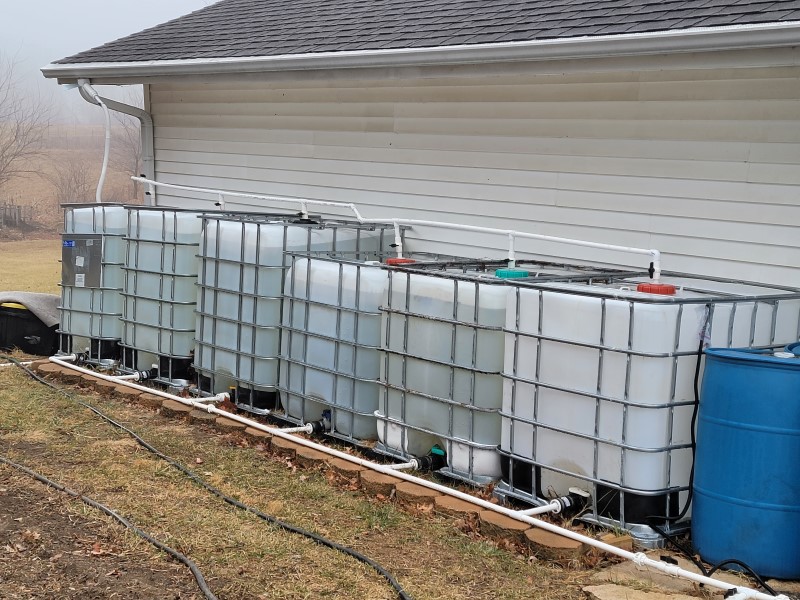
Obviously, all my water barrels and totes are thawed out now, but I always leave room at the top for the water to expand just in case.
No doubt water wasn’t my only major concern. Power and heat were top of the list, too. Although I had plenty of firewood for the winter, I’d never actually tried to use our woodstove as we moved in late last year (2021) and the winter never got quite that cold. Plus, I was busy doing a ton of other things… don’t judge me!
In any case, I knew I wanted to use the woodstove, so I had it inspected and cleaned over the summer. Overall, the stove worked well, but the one thing I didn’t like is that it’s inset into the wall:

It’s a nice stove, don’t get me wrong, but it needs the blower to function in order to put out any real heat. Either that or I have to leave the door open which adds too much smoke into the room for my preference. I’ve always had free-standing stoves in all but one home, and I didn’t realize just how much I prefer them until now. If I became rather desperate for heat, then I could wire the HVAC to run off the generator because we have natural gas, but I would have to be desperate to start messing with my furnace.
As for power, I was relatively ready for a short-term problem of, let’s say, less than a few weeks. We lost power for several hours one day, just long enough for me to consider taking action, but we made it a lazy day and stayed in best instead. Thankfully, the power company fixed things before my wife decided something simply had to be done or else.
Aside from filling up all five vehicles and a few extra gas cans that I’d let get empty, I got out my 1500-watter power inverter and extension cords and brought them into the house just in case:
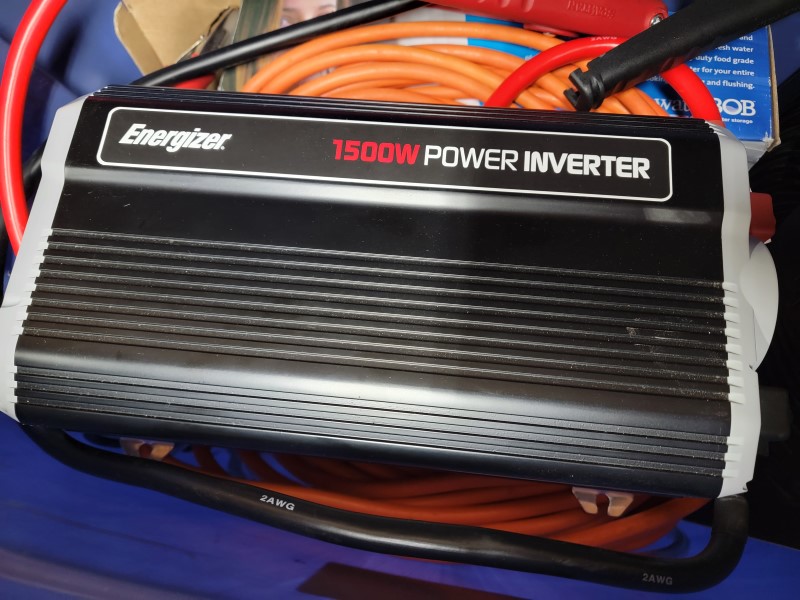
I have other, smaller inverters, but after our last significant power outage I found out that one of our refrigerators wouldn’t run on the 800-watt inverter I normally use, so I upgraded. Honestly, though I probably should’ve got the 2000-watt inverter so could run high-draw appliances, such as a toaster or coffee maker, but this inverter does what I need it to do, and it does it well.
If you’re unaware, my in-laws live with us. One item that they brought was an old (maybe ten or twelve) year old generator that’s never been started, so I pulled it out from the depths of the garage and and got it ready to go as a backup to the inverter:
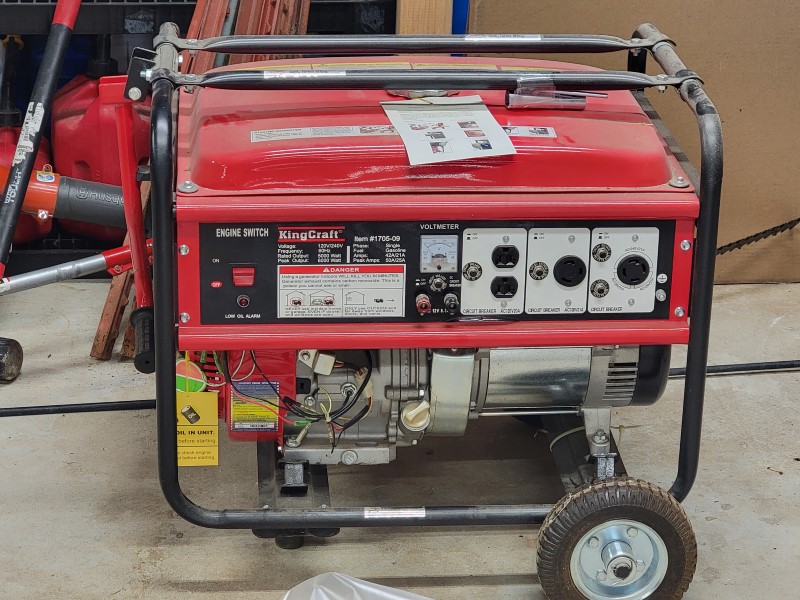
One of these days, most likely this coming spring, I’ll assemble my off-grid power setup, but that’s a major project and something I’m not actually looking forward to working on for reasons I’ll save for later.
Thankfully, we have natural gas for cooking, too, so I was able to light our cooktop when the power was out for cooking or boiling water. I have plenty of outdoor stoves, including sun ovens, and plenty of wood to burn, so cooking wouldn’t have been a problem. And, of course, we stockpile plenty of food, though I wouldn’t want it to freeze, so if our power stayed out for days, let’s say, then I may have had to move a lot of it to the basement where our woodstove is.
I could also mention that one day, about two in the morning when I couldn’t sleep, that I bought hundreds of AA batteries for our flashlights and lanterns even though I have plenty of batteries already. I could point out that I decided to get the laundry and dishes done just in case. And I could mention that I dragged in more sleeping bags and blankets from the garage just so I wouldn’t have to go looking for them if we lost heat.
I did a lot even though I consider myself prepared because, like it or not, there’s always something more/better that can be done when it comes to ensuring my family is taken care of when times get tough. I sure hope that you and yours are staying safe out there and that you’re doing the best you can to prepare for whatever is to come, whether that’s another harsh winter storm or the coming collapse, because the truth is this: once hard times come, waiting until it hits is simply too late.
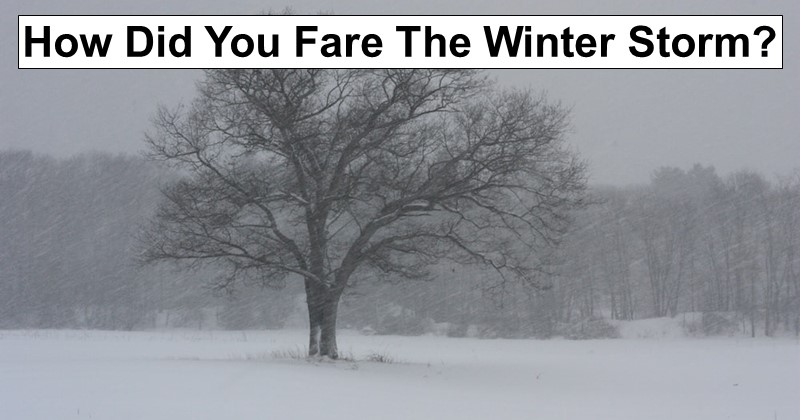
Leave a Reply